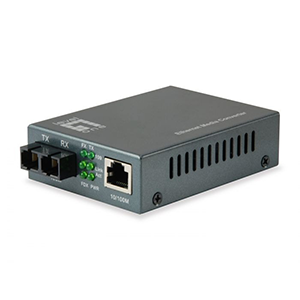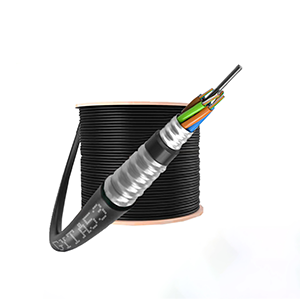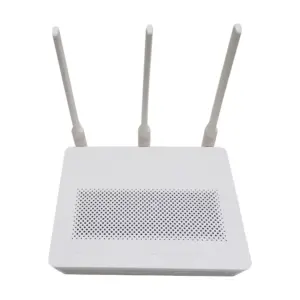Welcome to read this article. I will introduce you to the basic concepts, working principles and applications of PON optical fiber (Passive Optical Network Fiber) in different fields. PON optical fiber is a passive optical network technology that is widely used in optical fiber access networks.
In this article, we will explain the definition and basic principles of PON optical fiber to help you understand how it works and its importance in data transmission. At the same time, we will also introduce the fiber access network architecture of PON, including OLT (Optical Line Terminal, optical line terminal), ONU (Optical Network Unit, optical network unit) and ODN (Optical Distribution Network, optical distribution network).
Introduction to PON optical fiber
Definition and rationale:
PON fiber (Passive Optical Network Fiber) is an optical fiber transmission technology used to establish optical fiber access networks. It is a point-to-multipoint communication architecture based on optical transmission that simultaneously connects multiple users through a single optical fiber to achieve high-speed, high-bandwidth data transmission.
The basic working principle of PON is to use optical fiber as the transmission medium, and the optical signal is sent from the OLT (Optical Line Terminal, optical line terminal) to the ONU (Optical Network Unit, optical network unit) of each user. The optical signal in the PON system is distributed through a passive optical splitter (Passive Optical Splitter), which means that the optical signal does not require any power supply or signal amplifier during the distribution process.
PON architecture:
PON’s fiber access network architecture consists of three main components:
-
OLT (Optical Line Terminal): OLT is the central control unit in the PON system, usually located in the central office or data center of the service provider (ISP). It is responsible for the transmission and reception of optical signals and manages the entire PON network. The OLT and ONU are connected through optical fibers and control the transmission and scheduling of optical signals. OLT also provides management and monitoring functions for access networks.
-
ONU (Optical Network Unit): ONU is the user-side device in the PON system, also called optical network unit. Each user has an independent ONU, which is connected to the OLT through optical fiber. The ONU receives the optical signal from the OLT, converts it into an electrical signal, and then transmits the data to the user device, such as a computer, phone, or television. The ONU is also responsible for transmitting data from the user equipment back to the OLT.
-
ODN (Optical Distribution Network): ODN is the optical distribution network in the PON system, used to distribute optical signals from OLT to different ONUs. ODN includes fiber optic cables and passive optical splitters. Passive optical splitters split the optical signal into multiple branches, and each branch is connected to an independent ONU. This passive distribution method allows optical signals to be transmitted to multiple users at the same time, achieving point-to-multipoint communication.
The advantages of PON optical network architecture include high bandwidth, long transmission distance, low cost and flexibility. It has been widely used in home broadband access, enterprise networks and mobile communication base stations.
Application fields of PON optical fiber
Fiber optic access network:
PON optical fiber is widely used in optical fiber access networks. The two main application scenarios are FTTH (Fiber to the Home) and FTTB (Fiber to the Building).
-
FTTH (Fiber to the Home): FTTH refers to extending the optical fiber network directly to the user’s residence to provide users with high-speed broadband access. PON optical fiber technology has been widely used in FTTH. By deploying PON optical fiber networks, users can enjoy high-speed and stable Internet connections, supporting high-bandwidth applications such as high-definition video streaming, online games, and video conferencing. The advantages of FTTH include high-speed transmission, lower latency and strong anti-interference capability.
-
FTTB (Fiber to the Building): FTTB refers to extending the optical fiber network to terminal equipment in the building to provide broadband access to multiple users. PON optical fiber technology has also been widely used in FTTB. By deploying PON optical fiber networks, users in the building can share high-speed optical fiber connections to meet the needs of a large number of users accessing the Internet at the same time. The advantages of FTTB include high bandwidth, flexibility and scalability, making it suitable for places such as large residential buildings, commercial complexes and office buildings.
Public service provider:
PON optical fiber is also widely used among public service providers, including cases and advantages in the following aspects:
-
Telecom operators: Telecom operators can use PON optical fiber technology to provide high-speed broadband access services. By deploying PON optical networks, telecom operators can provide high-bandwidth Internet access to meet users’ needs for high-definition videos, online games, and cloud services. PON fiber optic networks can also support value-added services such as IP telephony, video surveillance, and smart homes.
-
Public institutions: Government departments, schools, hospitals and other public institutions can use PON optical fiber technology to build high-speed network infrastructure. These institutions usually require large-bandwidth networks to support applications such as high-definition video conferencing, medical image transmission, and distance education. PON fiber optic networks can provide high-quality data transmission and reliable connections to meet the network performance and security requirements of these institutions.
-
Urban and community networks: PON optical fiber technology is also used in urban and community network construction. By establishing PON optical fiber networks, cities and communities can provide high-speed broadband access and promote digital economic and social development. This includes urban broadband coverage, intelligent transportation systems, smart city applications, etc. The high bandwidth and scalability of PON fiber optic networks enable cities and communities to cope with growing data demands.
To sum up, PON optical fiber is widely used in optical fiber access networks and public service providers. It provides users with high-speed, high-bandwidth Internet access while meeting the needs of public institutions and urban communities for large bandwidth, reliability and scalability.
Types and characteristics of PON optical fiber
Single mode fiber:
In PON fiber, the commonly used fiber type is single-mode fiber (Single-Mode Fiber). Single-mode fiber has a smaller core diameter, usually 9/125 microns (9 microns is the core diameter and 125 microns is the cladding diameter). Single-mode optical fiber can transmit a single mode of optical signals, allowing optical signals to be transmitted at high speeds and over long distances. In contrast, multi-mode fiber (Multi-Mode Fiber) has a larger core diameter, usually 50/125 or 62.5/125 microns, and is suitable for short-distance communications.
Characteristics of single-mode fiber include:
- High bandwidth: The smaller core diameter of single-mode fiber allows optical signals to be transmitted at higher frequencies, providing greater bandwidth. This makes single-mode fiber suitable for high-speed data transmission and long-distance communications.
- Long transmission distance: Since single-mode optical fiber optical signals have only one propagation mode, which reduces the propagation loss and dispersion of optical signals, longer transmission distances can be achieved. This makes single-mode fiber ideal for long-distance communications across cities, regions, or internationally.
- Narrow beam propagation: Only one mode of optical signal is propagated in single-mode fiber, so the propagation of the beam is relatively concentrated, which reduces the diffusion and distortion of the optical signal and improves the reliability of transmission.
High separation ratio:
High Split Ratio refers to the distribution capability of the Passive Optical Splitter in PON optical fiber. Passive optical splitters distribute optical signals from OLT to multiple ONUs. The split ratio refers to the proportion of distributed optical signal power.
High separation ratio has important concepts and significance in PON optical fiber:
- Multi-user connection: The high separation ratio allows one OLT to connect to a large number of ONUs, enabling simultaneous access by multiple users. This is extremely valuable to providers as they can serve multiple users over a single fiber, reducing network deployment and maintenance costs.
- Flexibility and scalability: A high separation ratio means that the OLT can distribute optical signals to more ONUs, so the network can be easily expanded to accommodate increased user demand. This makes the PON optical network highly scalable and flexible, able to cope with the growing number of users and bandwidth requirements.
The realization of high separation ratio requires the use of high-quality passive optical splitters to ensure that optical loss and transmission distortion are reduced during the optical signal distribution process. The choice of high separation ratio needs to be carefully considered when designing a PON optical network to meet the number of users, bandwidth needs and network performance requirements.
PON optical fiber composition and transmission technology
optic fibre cable:
The optical fiber cable in PON optical fiber is composed of multiple components. The main components include core, cladding and jacket.
-
Core: The core is the central part of the optical fiber cable and is used to transmit optical signals. It is usually made of a material with a high refractive index (such as silicon) and has a smaller diameter. The fiber core is the transmission path for optical signals.
-
Cladding: The cladding is the outer covering of the fiber core and is made of low refractive index material (such as quartz). The function of the cladding is to confine the optical signal inside the fiber core through the total reflection mechanism to prevent the leakage and loss of the optical signal.
-
Jacket: The jacket is the outer protective layer of the optical fiber cable and is used to protect the core and cladding from physical damage and environmental effects. Sheaths are usually made of wear-resistant, corrosion-resistant materials such as polyethylene (PE) or polyvinyl chloride (PVC).
Optical transmission technology:
Commonly used optical transmission technologies in PON optical fibers include Wavelength Division Multiplexing (WDM) and Time Division Multiplexing (TDM).
-
Wavelength division multiplexing (WDM): Wavelength division multiplexing is a technology that simultaneously transmits multiple optical signals of different wavelengths in one optical fiber. In PON optical fiber, commonly used WDM technologies are CWDM (Coarse Wavelength Division Multiplexing) and DWDM (Dense Wavelength Division Multiplexing). CWDM uses a larger wavelength spacing and is suitable for lower data transmission requirements, while DWDM uses a smaller wavelength spacing and can achieve higher data transmission capacity. By using different wavelengths, different optical signals can be transmitted independently in the optical fiber, allowing multiple users to share one optical fiber.
-
Time division multiplexing (TDM): Time division multiplexing is a technology that sequentially transmits signals from multiple different users according to time slices. In PON optical fiber, TDMA (Time Division Multiple Access) technology is used. OLT allocates time slices to each user so that data from different users can be transmitted in a predetermined time sequence. This method realizes time division multiplexing between users, allowing multiple users to share the transmission resources of the same optical fiber.
The application of these optical transmission technologies in PON optical fibers can achieve efficient optical signal transmission and the ability for multiple users to share one optical fiber to meet the needs of different users.
Performance parameters and limitations of PON fiber
Transmission distance:
The transmission distance of PON optical fiber refers to the maximum distance that optical signals can be transmitted in the optical fiber. Transmission distance is limited by many factors, including fiber attenuation, dispersion, light source power and receiving sensitivity.
-
Fiber attenuation: Fiber attenuation is the phenomenon that optical signals gradually weaken during transmission. It is related to the absorption and scattering of fiber optic materials. Attenuation limits the distance an optical signal can travel in an optical fiber because as the transmission distance increases, attenuation causes the signal strength to decrease until it cannot be properly decoded and detected.
-
Chromatic dispersion: Chromatic dispersion is the signal distortion caused by the different propagation speeds of optical signals of different wavelengths when optical signals are transmitted in optical fibers. Dispersion will cause the expansion and overlap of optical signals, affecting signal quality and transmission distance.
-
Light source power and receiving sensitivity: The light source power is the optical signal power output by the transmitting end optical module, and the receiving sensitivity is the lowest optical signal power that the receiving end optical module can effectively receive and decode. The transmission distance is limited by the light source power and receiving sensitivity. If the light source power is too low or the receiving sensitivity is too low, the signal may be attenuated during transmission to the point where it cannot be decoded correctly.
Split ratio and split loss:
Split Ratio and Split Loss are important performance parameters in PON optical fiber.
-
Splitting ratio: Splitting ratio refers to the ability of the OLT (Optical Line Terminal) to distribute optical signals to multiple ONUs (Optical Network Units). It represents the proportional relationship between the optical signal power output by the OLT and the optical signal power at each receiving end. For example, if the splitting ratio is 1:32, it means that the OLT distributes the optical signal evenly to 32 ONUs.
-
Splitting loss: Splitting loss is the power loss caused by the optical splitter when it distributes optical signals to multiple receiving ends. An optical splitter splits an optical signal into multiple paths, and the optical power on each path is reduced due to the distribution of energy and scattering of light. Higher splitting loss means more optical power is lost during the distribution process.
Splitting ratio and splitting loss are very important for the performance and scalability of PON fiber. A higher splitting ratio can support more user access, but will cause higher splitting loss. Therefore, these parameters need to be balanced when designing and deploying PON networks to meet the needs of the number of users and transmission distance.
Installation and maintenance of PON optical fiber
Fiber Optic Splices and Connections:
When installing PON fiber, correct fiber connectors and connection methods are very important to ensure good connection quality and minimal signal loss. Here are some suggestions and steps:
-
Preparation: Before making fiber splices and connections, make sure the work area is clean, tidy and free of dust and dirt. Also, check the integrity of the fiber heads and connectors to ensure there is no damage or contamination.
-
Cleaning operation: Use appropriate fiber cleaning tools and solvents to clean the fiber head and the end surface of the connector. Make sure to use dry Wipe gently with clean paper or cotton swab to avoid scratching or causing additional damage.
-
Align and insert: Align the fiber end face with the connector and gently insert it into the connector socket. Make sure the fiber optic plug is oriented correctly to avoid bending or twisting the fiber.
-
Secure the connection: Once inserted into the connector, make sure the connection is secure. Depending on the connector type, it can be secured using a rotating locking mechanism or a tightening screw.
Fiber Testing and Troubleshooting:
To ensure the reliability and performance of PON fiber optic networks, fiber optic testing and troubleshooting are necessary. Here are some common testing methods and troubleshooting tips:
-
Optical power test: Use an optical power meter to measure the optical power level of different connection points, including OLT, splitter and ONU. By comparing the optical power of each connection point, it can be detected whether the signal strength is within the normal range and whether there is signal loss or failure.
-
OTDR test: OTDR (Optical Time Domain Reflectometer) is a commonly used optical fiber test equipment, used to detect loss, attenuation, disconnection and fault location in optical fiber. It sends pulsed light signals into optical fibers and determines fiber status and events by measuring reflected and scattered light signals.
Troubleshooting: If there is a problem with the PON optical fiber, such as connection interruption or signal quality degradation, you can take the following steps to troubleshoot:
- Check connectors and connectors: Make sure connectors and connectors are not loose or damaged and are connected correctly.
- Troubleshoot light source problems: Check whether the light source module is working properly and whether the output power meets specifications.
- Check fiber attenuation and loss: Use test equipment to measure the attenuation and splitting loss in the fiber to determine whether there are abnormalities.
- Check the fiber connection path: Check whether the fiber path is physically damaged or bent, causing signal loss or attenuation.
When performing fiber optic testing and troubleshooting, it is recommended to follow the equipment manufacturer’s guidelines and use appropriate test equipment to ensure accuracy and safety. If you encounter complex fault conditions, professional fiber optic technicians may be required for further diagnosis and repair.
Summarize:
By reading this article, you will have a deeper understanding of the definition, working principle and application of PON optical fiber in different fields. PON optical fiber plays an important role in optical fiber access networks, providing users with high-speed and reliable data transmission solutions. Understanding the different types and characteristics of PON fiber, as well as proper installation and maintenance methods, will help you take full advantage of PON technology.




